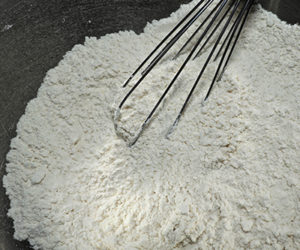When the coronavirus pandemic first began weaving its way through American society, it sent people scurrying to the supermarkets, filling their carts with everything they needed and didn’t need in preparation for a life of quarantine, locked down and hunkered down for an undetermined period of time. At the checkout counter, behind roll after roll after roll of toilet paper swiftly gliding down the conveyor, sat bags of flour. It wasn’t long before the only flour left on store shelves was the white powdery residue that had spilled out, marking where they once stood. People sought comfort in returning to the basics of baking. Soon kitchens across the country were wafting of fresh baked breads, cookies, and pies, harkening back to simpler times.
It was the work of a microscopic organism that forced people from the bustling streets and over-scheduled schedules to shelter in place, to slow down, spend time with family, relax, stay in touch with friends on Facebook, WhatsApp, and Instagram, google recipes, and to breathe, breathe in the aromas emanating from their ovens. A wave of soothing calmness soon washed throughout the land.
Recipes calling for nature’s own ingredients: apples, cinnamon, cloves, nutmeg, vanilla, honey, lemon, butter, and of course, flour, burst with flavor, tantalizing pallets, filling stomachs, and satisfying souls. Minus the additives and fillers, excessive sugar, and hair-raising doses of sodium, the all-natural, home baked recipes not only tasted good but didn’t threaten one’s health. Relying on old trusted recipes and sometimes altering them with a little of this and a little of that from pantry shelves, gave birth to new variations and new flavors. Perhaps there’s a deeper underlying lesson in this. Maybe we can learn something from that simple apple pie recipe and experimenting with it. Read more

